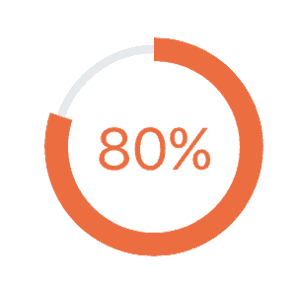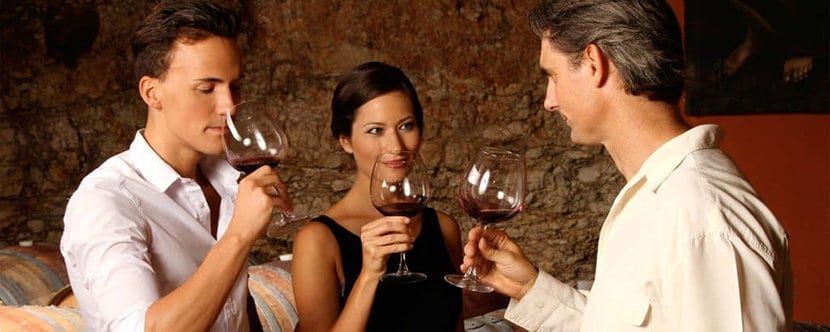In this post: tourism marketing and the role it plays in growing customers and wine sales, the wine experience, the responsive design wine website as a motivational tool to visit, tasting rooms, educational tours, winery facts and figures, visitor profiles.
It Begins with Tourism Marketing
The numbers are pretty astounding:
- 80 percent of the people that visit North Carolina wineries are tourists
- Almost 70 percent of the winery customers who indicated the appeal of the winery website was very important to their decision to visit the winery
The statistics get even better when you dig deeper and learn more about wine tourist demographics and motivators. However, we don’t want to muddy the water so we’ll save those for another day.
The bottom line is that tourism marketing is key to attracting more wine-loving customers – tourists, growing your wine business and increasing online sales.
Your website and all the digital marketing efforts surrounding it are critical to enticing guests not to just visit your winery but rather to have an experience at your winery. Now more than ever, visitors seek experiences. They want to participate in an activity. They want to comment on it and they want to share it with their family or friends.
Your website in itself should be the logical first step in your guest’s journey. It needs to convey what they will experience and then deliver on those promises.
It’s All About the Experience
“Because wine is crafted to express local character, it emphasizes the uniqueness of a place. No more would a vintner in North Georgia aim for his or her wine to taste like that of another vintner than would one small town strive to replicate the aesthetic of another small town. Tourists seek unique experiences. An authentic, honest aesthetic should be preserved that conveys a distinct regional feeling …,” wrote Leanne Wells on the topic of sustainable wine tourism2.
With respect to wines, visitors want to be involved in every way possible: to swirl the wine in their glass, smell, taste and savor the wine. The winery experience should incorporate the ability to see how it’s made and bottled; where it’s stored and learn about the land, the chemistry, the types of varietals and who designed the labels. They desire engaging experiences: saying a bride’s and groom’s wedding vows at the vineyard, meeting the winemaker and dining with friends with wine selections paired to bring out the best flavors in each course.
Your website should tease wine-lovers as to the type of experience they will have at your winery or vineyard. Transport potential visitors with words and dynamic photography to your special place. They in turn will map themselves to your gates and cellar doors.
It’s your role as a winery owner or manager or marketing director to take them by the hand and develop a personal relationship with each and every one. If you’ve done this, they will become your evangelist and stand atop his or her favorite social media mountain and shout out, “Hey world, this winery is the best thing since sliced bread.”
Time and again, research illustrates that visitor-focused tourism experiences earn the most favorable results which in turn drives even more visitors.

The Tourism Experience Begins with Your Website
A wine experience begins long before someone steps foot on your land. It begins when a wine-centric or not-so-wine-centric visitor starts researching “wineries,” “things to do” or “what’s happening” and your winery website appears in search engine results or your attraction appears in a listing, editorial or video on your state tourism or wine marketing organization’s websites and the local convention and visitors bureau (CVB) or chamber of commerce website.
When you consider the number of winery choices, how do you stand out from your competition? First, stop thinking of yourself as a product. Second, start thinking about your experience and not just any experience but a tourism experience.
A study of Kentucky wineries and Kentucky wine producers3 highlighted many insights regarding websites:
- The most successful Kentucky wineries had a strong and clear objective for the role a website plays in the brand management of their wine and the potential benefits.
- The role of the website, as a place to disseminate and, importantly, to control the information. When the website is the “keystone” of digital media information, then all the other outlets can be managed in relation to the official information outlet.
- The website is an invitation to the winery – to entice a visitor to choose a specific winery over another. When used in this way, the website becomes the channel by which interpersonal (and the most important) communication can be conducted between winemakers and potential customers.
A winery not only needs to convey their experience on their website but they need to deliver on that promise. In California, certain wineries are able to fully project the wine tourism experience online via their website and target specific consumer perceptions. These particular wineries have effectively and successfully established their brand name online and boosted winery visitations at the same time.4
It’s interesting to note that while the online wine tourism marketing information below dates back to 2004 and 2005, it is even more relevant today.
Jessica Yuan explained that wineries are impacted by internal push factors – socializing, relaxing, meeting the winemaker and acquiring specialized knowledge – and the external pull – wine tasting, buying, eating, entertainment.5 As before, the educational experience is of value to wine tourists … many visitors planned trips to wineries to learn about winemaking.6

The Wine Sweet Spot
The number of winery visitors that travel and stay overnight is much more significant than the number of local residents. Yes, the latter is potentially your day visitors but research shows their economic impact is much less.
The World Food Travel Association’s recent report cited 75 percent of leisure travelers have been motivated to visit a destination because of culinary activity. As many as 86 percent of the respondents claimed these were essential to a visitor experience.7
Some Facts & Figures
The state of North Carolina further reinforces the value of visitors (tourists) and experiences.1

- 80 percent of winery customers are visitors to the community with more than 70 percent from within North Carolina.
- Most overnight visitors went to North Carolina wineries in search of a vacation experience. These types of visitors have a greater economic impact.
- Almost 70 percent of the winery customers indicated the appeal of the winery website was very important to their decision to visit.
- Customer service was the best predictor of future winery visitors and willingness to recommend the winery.
Here’s where it gets interesting. We know the most profitable sales are direct-to-consumer. This was confirmed in Silicon Valley Bank and Wine Business Monthly’s survey8 results.

A recent North Carolina Visitor Profile10 showed a jump of two percentage points – to 5 percent – among overnight visitors who participated in a wine tasting/winery tour activity. In-state residents now sit at 4 percent. As previously stated, day-trippers had a smaller economic impact than tourists.
Overnight visitors to North Carolina (in-state and out-of-state) facts:
- Nearly two-thirds (64.2%) are married.
- Classify him or herself as white (84%).
- Nearly two-thirds (64.7%) have a household head with a college degree or higher.
- The average age is 47.
- 59 percent reported the head of household is employed, while 22 percent are retired.
- The average household income in 2016 was $87,140 with half reporting a household income of $75,000 or more. Twenty-one percent had a household income of over $125,000. (Out-of-state – excluding in-state – overnight visitors, had an average household income of $92,450).
Conclusion
Everything points to the fact that visitors, whether in-state or out-of-state, spend more money than residents at wineries. The demographics are clear; the income levels of visitors are higher and reinforced in generational data, too.
Vacationers desire a wine experience and they tell you that it starts with your wine website. Perhaps your very first connection with a future customer starts here.1 This wine relationship can evolve if your website sells your wine experiences and also uses an email opt-in to continue to stay in touch.
Something you may want to consider, according to a 2017 travel study11, 87% of the respondents said photos influenced their decision. Your website needs to do many things but most importantly it needs to accurately reflect your experience. We encourage the use of nothing less than strong, dynamic photography.
Once that visitor arrives, it’s your job to make sure your front of the house staff are welcoming, genuine, knowledgeable and offers exceptional customer service in an effort to continue to maintain your wine relationship.
How do you increase visitation to your business, increase the caliber of clients you attract and grow sales? The answer is marketing. Take the first step, contact Flying Compass today.
1 North Carolina Dept. of Commerce, Division of Tourism, Film & Sports Development and the University of North Carolina – Greensboro, Byrd, Canziani, Hsieh & Debbage.
2 Sustainable Wine Tourism: A Framework for the North Georgia Wine Region, Leanne Wells
3 From Grapes to Wine to Brands to Culture: A Qualitative Study of Kentucky Wineries and Kentucky Wine Producers, Benjamin J. Triana
4 Examining the Online Wine Tourism Experience of California Wineries, Roblyn Simeon and Lutfus Sayeed
5 Jessica Yuan et al., 2005
6 Developing Wine Trails as a Tourist Attraction in Israel”, The International Journal of Tourism Research, Jaffe, E. and Pasternak, H. (2004)
7 World Food Travel Association, Food Travel Monitor Report, California State University, Matthew Stone (2016)
8 Silicon Valley Bank and Wine Business Monthly Tasting Room Survey, 2016
9 North Carolina Department of Agriculture and Consumer Services study on the Economic Impact of North Carolina Wine and Grapes (2013)
10 Visit North Carolina, 2016 North Carolina Visitor Profile
11 2016 Travel Insights Study

